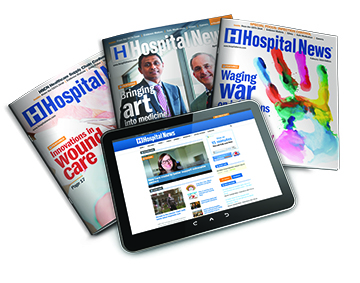By Dr. Michael Apkon
As leaders, our first commitment is to keep patients and staff safe – no straightforward task. All complex systems fail predictably unpredictably. Healthcare delivery depends on a complex system, individuals, and team-based performance. Failures are too common with nearly four per cent of people admitted to Canadian hospitals suffering some sort of harm – sometimes significant preventable injury or death. While harm can result from departures from practice standards, most result from complex circumstances that make it easier to err and harder to intercept paths towards harm.
The Hospital for Sick Children (SickKids) has long focused on improving safety of care. Indeed, our clinicians have created tools supporting safety, now widely used internationally. Moreover, outcomes for children undergoing treatment in many programs are among the best compared to peers. Yet, when looking carefully, we saw that unexpected poor outcomes happen and sometimes result from preventable failures. In 2015, we began using a standardized way to detect and analyze unexpected harm to understand how frequently people suffered moderate or serious harm from deviations from accepted practice standards – events we call serious safety events (SSEs; Healthcare Performance Improvement, LLC). We also compared our results to more than 100 US children’s hospital collaborating to improve safety in the Solutions for Patient Safety Network. (www.solutionsforpatientsafety.org).
What we found was somewhat reassuring – we provided similarly safe care as many peers. However, some organizations had reduced SSEs by more than 80%, by adopting a comprehensive and robust safety program. In fact, I had led such an initiative in my former institution where the rate of serious safety events fell by more than 80% over three years.
With the data about our performance in hand and knowing other organizations improved safety substantially, in 2016 we launched “Caring Safely” to reduce preventable harm to children by 2/3 and preventable employee harm by 20 per cent within three years. We also became the first international participant in Solutions for Patient Safety, believing we could improve far faster working with other organizations. We’ve been fortunate to find partners close to home as well – partnering with University Health Network to create Caring Safely and learning from each other. We also continue to partner with the other children’s hospitals in Canada, several of which have joined Solutions for Patient Safety.
What we’ve learned is safety is about staying out of trouble and also getting out of trouble quickly when things don’t go as intended. Staying out of trouble depends on reliably doing things the safest way by combining standardization (for example, taking the same steps every time as a pre-procedure checklist to prevent infections and errors) and more mindful practice to avoid slips, lapses, and cognitive errors during mundane and complex tasks. It also depends on maintaining situational awareness about tasks at hand and factors that might influence performance. Getting out of trouble – having resiliency to recognize and adjust to deviations from expected paths – also depends on a more mindful practice as well as exceptional teamwork and communication.
Since starting, we’ve trained over 6000 individuals – ultimately aiming to train our entire workforce – to use safety behaviours that promote mindful practice, improved communication, and teamwork. We’ve also adopted practices aimed at learning from those times when situations don’t go as planned – particularly when we identify serious preventable harm – as well as ways to reinforce safety at every level including having families participate on our safety committees. Although we still have work left to do, we see progress: a 50 per cent decrease in SSEs and a more than 20 per cent reduction in injuries to staff.
Along the cultural transformation created by Caring Safely, we’ve learned leaders can expect to create and manage some tensions. First, teamwork requires appropriately asserting concerns and respectfully challenging information when necessary. That creates interpersonal conflict when confrontation is unfamiliar. Reinforcing behaviours that support open communication, respectful challenge, and conflict resolution is an important leadership role. Second, discussing errors or failures, particularly when a child is injured, is traumatic, especially for caregivers involved. However, learning and improvement requires transparency. Supporting caregivers through the experience of falling short is an important leadership responsibility that helps establish a fair and just culture where system contributors are acknowledged and people can be accountable for choices they make, recognizing that the best of people can make tragic mistakes. Third, as deviations from practice standards are identified during safety event reviews, we may learn that choices to deviate are the norm and driven by failures to establish clear accountability or address systems factors that make conforming to standards difficult.
We chose to focus on safety, not because we believed it easy to improve. Rather we chose this focus because we recognize that reliability and resilience are keys to improving not only safety, but all aspects of performance. While we set an initial goal of reducing preventable harm by 2/3, our ultimate aim is to eliminate preventable harm over a set of achievable steps.
Dr. Michael Apkon is President and CEO at The Hospital for Sick Children.




